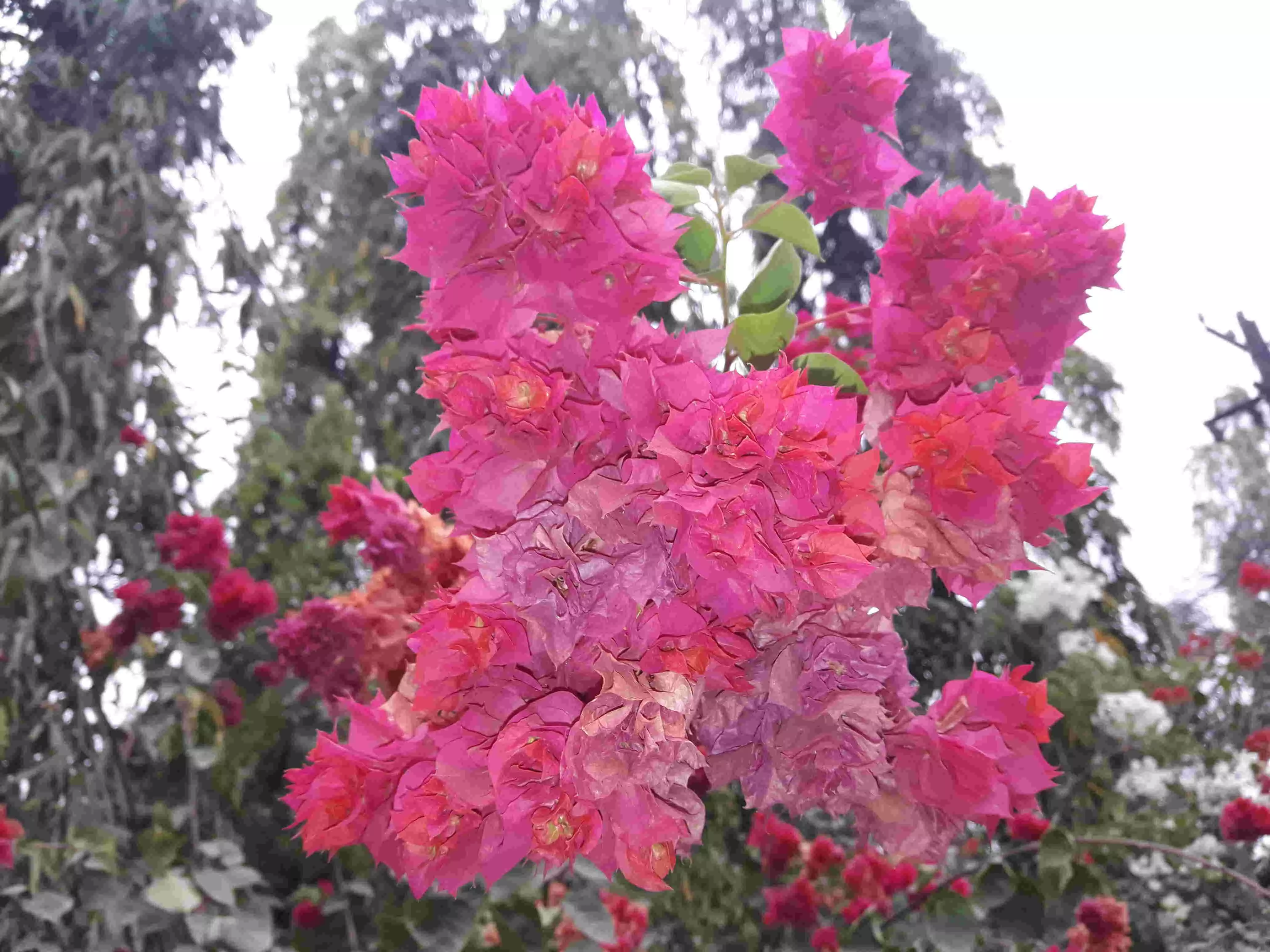Bougainvillea: A strikingly beautiful flowering plant, blazing with bright, beautifully coloured blooms
It is an easy-to-grow plant which needs minimal care, less water and blooms in the brightest of colours even in the warm summers
By Beyniaz Edulji
Bougainvillea: A strikingly beautiful flowering plant, blazing with bright, beautifully coloured blooms
Hyderabad: As it gets warmer, one notices a strikingly beautiful flowering plant, blazing with bright and beautifully coloured blooms. It is the Bougainvillea, which is also used for culinary and medicinal purposes in many places. It is an easy-to-grow plant which needs minimal care, less water and blooms in the brightest of colours even in the warm summers.
History
The plant is named after Louis Antoine de Bougainville, a French naval commander who led an expedition in 1766 to explore new territories for France. The expedition arrived in Rio de Janeiro in 1767, where there were trees with bright mauve and magenta bracts. This new genus was named Bougainvillea in honor of the expedition leader. At least five specimens of this then-unusual plant were collected in Rio de Janeiro and brought back to France.
A Vibrant Vine
Bougainvillea is a vibrant, woody vine known for its showy, colorful bracts that are often mistaken for flowers. These modified leaves are in shades of purple, red, orange, pink, yellow, and white. The true flowers are small, delicate, and often hidden within the bracts. Bougainvillea thrives in tropical and subtropical climates, but it blooms year-round in warm regions. The leaves are dark green or variegated and are 2 to 6 cm in diameter and 4 to 13 cm in length. The bracts are smooth, papery, and colorful, measuring 1 to 5 cm long with prominent veins. The true flowers tiny white or yellow blooms nestled within clusters of bracts. This sprawling vine can grow up to 35 feet tall, depending on the variety, featuring sharp thorns along its branches.
This plant is very versatile. It adds vibrant color to your garden, can be used in cooking, and in natural remedies too.
Culinary Uses
While mostly grown for its beauty, bougainvillea also have culinary uses. Thesweet, floral, and umami flavor makes them a delicious addition to various dishes like salads, fried dishes, beverages and desserts.
Salads
Add fresh bougainvillea bracts to salads for a splash of color and a mild floral note.
Fried Dishes
In Southern Thailand, bougainvillea bracts are battered and fried as a unique side dish known as ‘dokmai thot.’
Drinks
Bougainvillea bracts are commonly infused into teas, cocktails, lemonades, and even smoothies.
Desserts
Use bracts as edible garnishes on cakes and pastries.
Medicinal Uses
Traditional medicine practitioners use bougainvillea for its anti-allergic and soothing properties. Bougainvillea bracts are often steeped into tea or infused into syrups to help with fevers and flu, sore throats, colds and coughs, respiratory and digestive problems. Bougainvillea bracts are also believed to have anti-inflammatory properties. However, some may experience skin irritations too.
How to grow Bougainvillea
Bougainvillea is a hardy, drought-tolerant plant that thrives in well-drained soil and full sunlight. It requires at least 6 hours of direct sunlight daily. Water profusely but infrequently to encourage deep root growth. Regular pruning helps shape the plant and encourages flowering. Use an organic fertilizer during the growing season to promote healthy blooms. It grows easily from cuttings.
Tips to care for Bougainvillea
Plant bougainvillea in well-drained soil with plenty of sunlight. Ensure the roots are loose and avoid overwatering to promote healthy growth. Bougainvillea needs soil with good drainage. Water deeply but infrequently. Let the soil dry out between waterings to encourage strong root development. Bougainvillea requires at least 6 hours of direct sunlight daily for vibrant coloured blooms. Prune after the main flowering season to promote new growth and more blooms.
Bougainvillea can be grown in the ground as well as in pots with proper drainage and support as it is basically a climber. Once established, bougainvillea is highly drought-tolerant and thrives in dry conditions.
Care needs to be taken when handling bougainvillea to avoid scratches. Wear gloves while pruning.